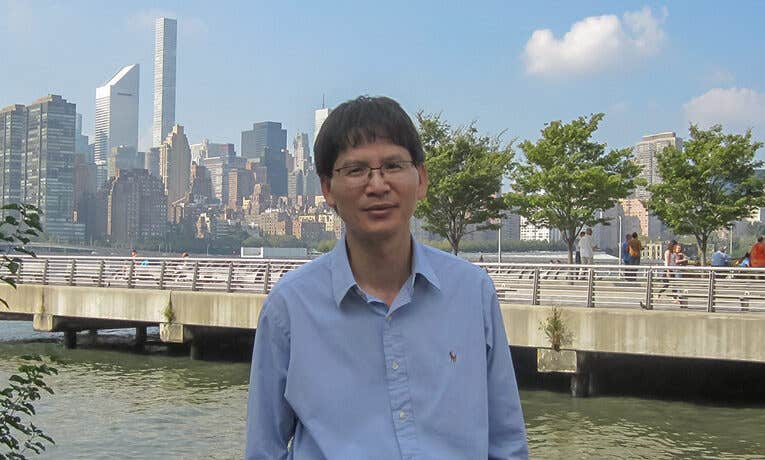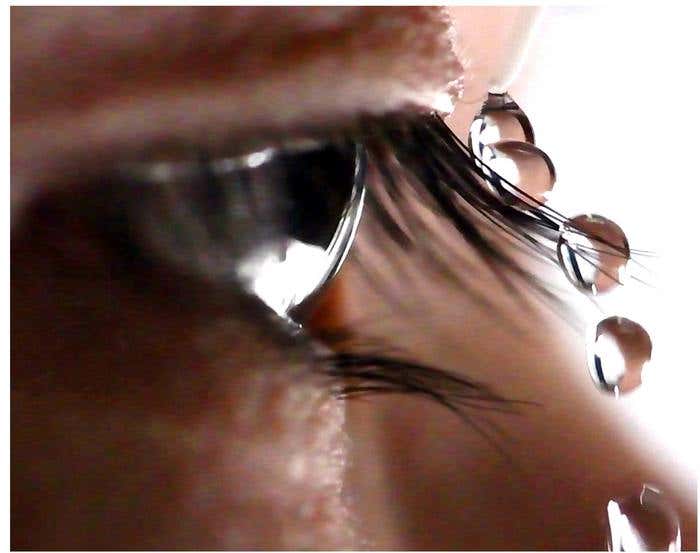Professor solves two long-standing math problems – advances our understanding of nature
Pham Tiep’s breakthroughs in representation theory solve two long-standing conjectures, advancing our understanding of symmetries in nature.

Rutgers mathematician Pham Tiep uses only a pen and paper to conduct his research, which so far has resulted in five books and more than 200 papers in leading mathematical journals. (CREDIT: Pham Tiep)
Two mathematical breakthroughs have been achieved by Pham Tiep, a professor at Rutgers University, which could significantly advance the understanding of symmetries in nature and the behavior of various random processes. These insights could have broad implications for fields such as chemistry, physics, computer science, and economics.
Tiep’s work provides key advances in the field of representation theory, which plays a crucial role in several areas of math and the physical sciences. Representation theory, a branch of algebra, deals with transforming abstract shapes and symmetries into numbers through matrices.
These tools help researchers analyze complex systems and structures, with applications in everything from encryption to particle physics. Through this work, Rutgers has maintained its reputation as a global leader in this subject.
The first breakthrough was solving the 1955 Height Zero Conjecture, which was first posed by Richard Brauer, a mathematician of great renown. The conjecture had been one of the most perplexing challenges in the representation theory of finite groups. Tiep, along with his collaborators, was able to prove the conjecture, which had stumped researchers for decades.
Reflecting on this achievement, Tiep explained the nature of conjectures, stating, “A conjecture is an idea that you believe has some validity. But conjectures have to be proven. I was hoping to advance the field. I never expected to be able to solve this one.”
Tiep and his colleagues have long worked with a blueprint of challenges that Brauer had laid out in a series of mathematical conjectures from the 1950s and 1960s. Speaking about Brauer, Tiep said, “Some mathematicians have this rare intellect. It’s as though they came from another planet or from another world. They are capable of seeing hidden phenomena that others can’t.”
Tiep’s work on this problem has been the focus of his career for the past decade, but his efforts have been rewarded with a solution that opens the door to further mathematical discoveries. The insights gleaned from this proof may help tackle other unsolved problems in mathematics, including those posed by renowned mathematicians such as John Thompson and Alexander Lubotzky.
Related Stories
The second major advancement relates to the Deligne-Lusztig theory, another key aspect of representation theory. Tiep’s solution addresses issues involving the trace of a matrix, which is the sum of its diagonal elements. This seemingly technical detail is crucial for understanding the deeper structures within representation theory.
Tiep's research in this area was published in two papers—one in Inventiones mathematicae and the other in Annals of Mathematics. These contributions provide new tools for analyzing traces, which could lead to further progress in various branches of mathematics.
“Tiep’s high-quality work and expertise on finite groups has allowed Rutgers to maintain its status as a top worldwide center in the subject,” said Stephen Miller, Chair of the Department of Mathematics at Rutgers. Miller pointed out that one of the major achievements in 20th-century mathematics was the classification of finite simple groups, a field in which Rutgers played a pivotal role. “Through his amazing stretch of strong work, Tiep brings international visibility to our department,” Miller added.
Tiep's work, while grounded in abstract mathematical concepts, has far-reaching applications. Representation theory is vital in studying the symmetry of molecules, creating encryption algorithms, and developing error-correcting codes for communication systems.
The methods he employs in his research highlight the power of pure thought and collaboration. Tiep’s process involves pen and paper—he often jots down formulas and logical chains of reasoning. Despite the simplicity of his tools, his results have revolutionized understanding in his field.
Collaboration is central to Tiep’s success. His work on the Height Zero Conjecture was a joint effort with several international colleagues, including Gunter Malle from Germany, Gabriel Navarro from Spain, and Amanda Schaeffer Fry, a former student now at the University of Denver.
For the Deligne-Lusztig theory breakthrough, he worked with Robert Guralnick of the University of Southern California and Michael Larsen of Indiana University. Together, they tackled the problem of traces, producing solutions that promise to yield further advancements.
“Tiep and coauthors have obtained bounds on traces which are about as good as we could ever expect to obtain,” Miller said, referring to the rigor of their findings. He emphasized that progress in such a mature subject is rare, but the potential applications are broad and impactful.
Unlike many researchers in the physical sciences who rely on complex equipment, much of Tiep's progress comes through careful thought and collaboration with his peers, sometimes in person and sometimes via Zoom. He explains that his best ideas often emerge when he least expects them.
“Maybe I’m walking with our children or doing some gardening with my wife or just doing something in the kitchen,” he shared. His wife, he says, can always tell when he’s thinking about math.
By breaking through these long-standing problems, Tiep has not only advanced the field of mathematics but also highlighted the value of persistence and collaboration. His work opens the door to future discoveries that may further transform our understanding of the natural and mathematical world.
Note: Materials provided above by The Brighter Side of News. Content may be edited for style and length.
Like these kind of feel good stories? Get The Brighter Side of News' newsletter.
Joshua Shavit
Science & Technology Writer | AI and Robotics Reporter
Joshua Shavit is a Los Angeles-based science and technology writer with a passion for exploring the breakthroughs shaping the future. As a contributor to The Brighter Side of News, he focuses on positive and transformative advancements in AI, technology, physics, engineering, robotics and space science. Joshua is currently working towards a Bachelor of Science in Business Administration at the University of California, Berkeley. He combines his academic background with a talent for storytelling, making complex scientific discoveries engaging and accessible. His work highlights the innovators behind the ideas, bringing readers closer to the people driving progress.



